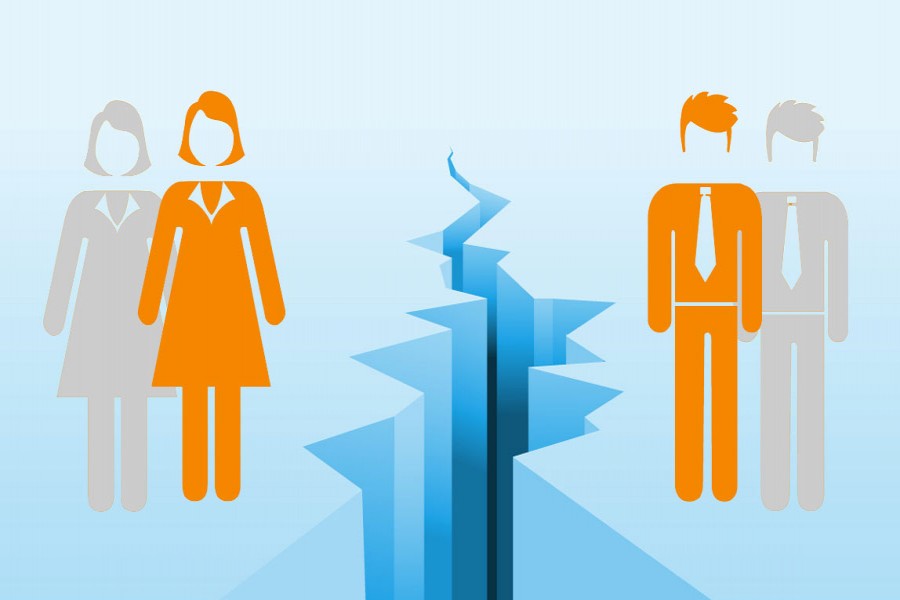The fact that Bangladesh is moving fast in ensuring gender equality does not come as a surprise. The country has been making strides for achieving considerable improvement in this field for quite some time. According to World Economic Forum's Global Gender Gap Report 2017, Bangladesh ranks 47th among 144 countries in Global gender Gap index 2017. In 2016, Bangladesh was at the 72th position which means the country has moved 25 notches up within a year in gender gap index. Iceland has topped in Gender Gap index 2017, followed by Norway, Finland, Rwanda and Sweden. Yemen is at the bottom among 144 counties.
Bangladesh leads among the South-Asian countries in gender gap index 2017. Maldives comes second after Bangladesh among South-Asian countries with its ranking at106th position. Pakistan is at the bottom in the region whose ranking is 143rd. India, Sri-Lanka, Nepal and Bhutan have ranked 108th, 109th, 111th and 124th respectively.
The report ranks countries by calculating gender gap between men and women in specific four key areas: political empowerment, economic participation and opportunity, educational attainment and health and survival. Bangladesh has progressed in every key area of gender gap index. In political empowerment area, Bangladesh is among top 10 countries of the index and stood 7th among 144 countries. Bangladesh has improved in economic participation and opportunity area this year with a leap by six notches from the previous year. The country has slightly improved in educational attainment to reach 111th position from 114th last year. But Bangladesh has performed badly in health and survival sub index of gender gap index as the ranking significantly dropped to 125th from last year's 93rd.
Now, does Gender Gap Report 2017 reflect actual gender scenario in a country? The report measures only women's disadvantage compared to men's, which is not strictly a measure of equality. In the case of Bangladesh, gender gap index does not seem to reflect the actual scenario. Many experts disagree with the World Economic Forum report because recently, gender imbalance has increased as result of violence against women, lack of meaningful economic participation, high rate of drop-out in secondary and higher secondary levels. The Gender Gap index does not reflect these visible gender imbalances of a country.
Security of life is a precondition to lead a good life. But security for women in Bangladesh is still elusive. Without ensuring security for women in their daily life, improving gender equality will be tough. Due to insecurity of life, many girls are killed every year due to dowry related violence, sexual harassment and rape. 5000 women died due to dowry-related-violence in Bangladesh since 2001. Dowry is a social evil. According to violence against women (VAW), 87 per cent of Bangladeshi married women are abused by their husbands. According to Ain o Salish Kendro (ASK) report 2016, 126 women got killed, 106 physically-tortured and 4 women committed to suicide because of dowry related violence in the year. Rape is another vicious threat for women. In 2016, 1050 women have been raped and 44 women killed after rape.
According to Action Aid Bangladesh, women are lagging behind in education and literacy, 'where enrollment does not reflect the real scenario.' The percentage of literacy of women in Bangladesh is 54 per cent. But the ratio of female students at secondary and higher secondary level is very low. Child marriage is one of the reasons of drop out of female students. According to Bangladesh Bureau of Statistics (BBS), due to child marriage, two in every five girls aged between 15 and 19 drop out from school. According to UNICEF report 2016, 52 per cent girls got married off before the age of 18 that year.
The average woman in Bangladesh earns about 60 per cent of what her male counterpart earns for the same amount of work. Although women's participation is increasing in the country, they are deprived of fair wage for their labour. The index only reflects on women's participation and not on inequality caused by discrimination in salary and wage for the same work done by men and women.
However, since the Index weighs countries in terms of their comparative advantages and disadvantages, it should be taken into account, though not as a comprehensive assessment of country position. Bangladesh has definitely improved its position in removing gender gap compared to other South-Asian countries. However, a lot needs to be done by the government and its allies in the private sector to address the issue on a continuous basis.
The writer is a BBS (Bachelor in Social Sciences) student in Development Studies at Dhaka University.


